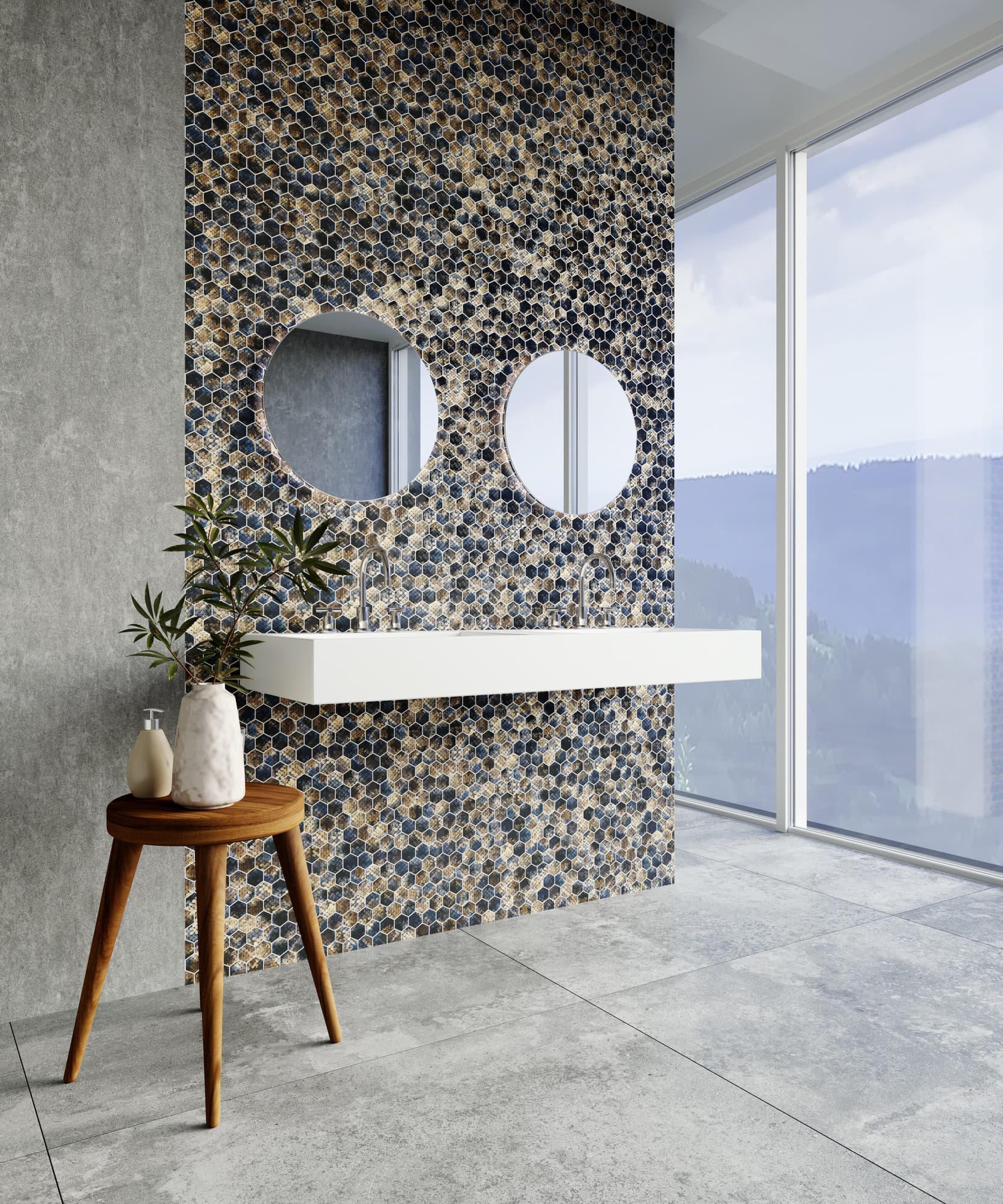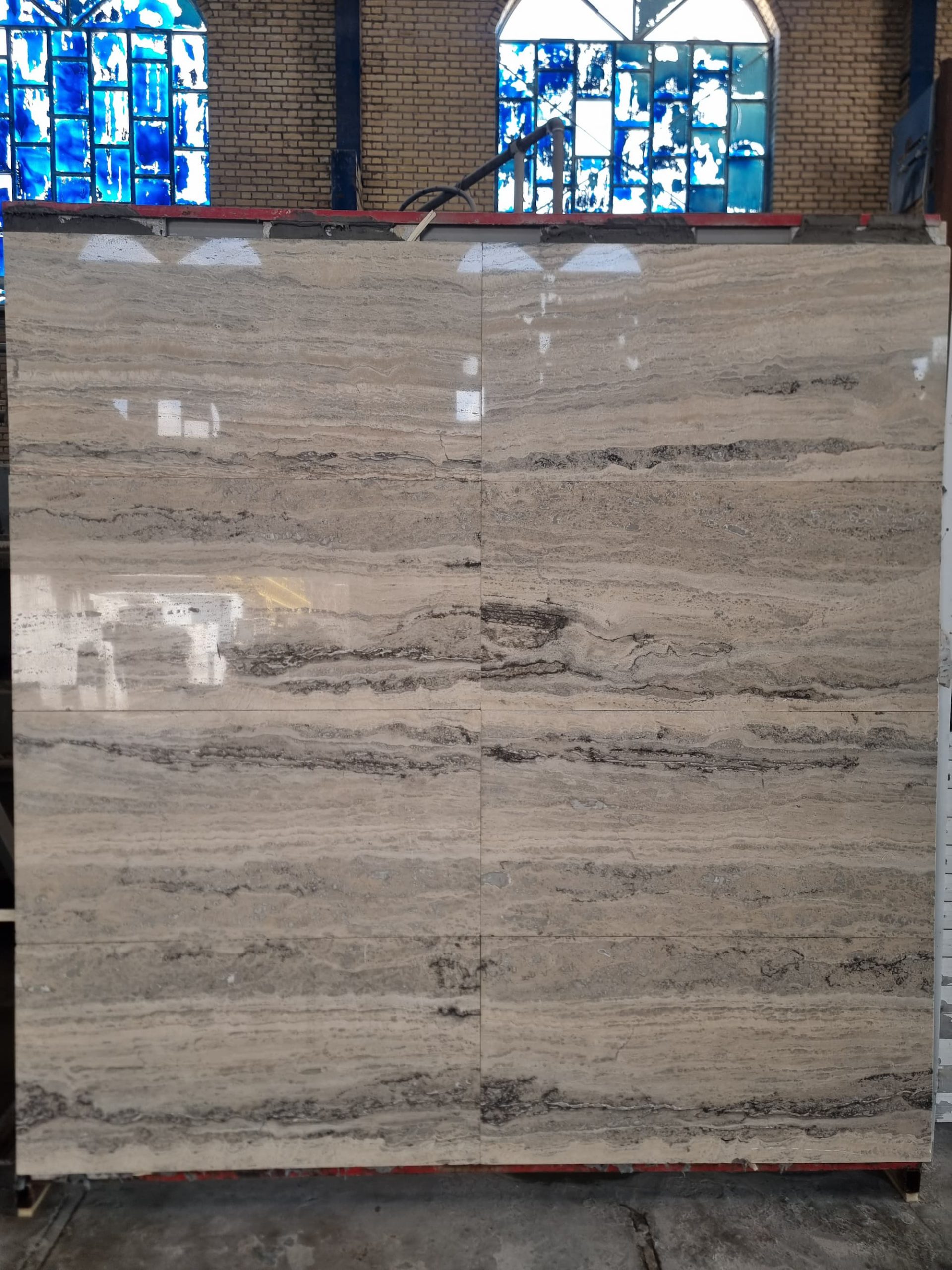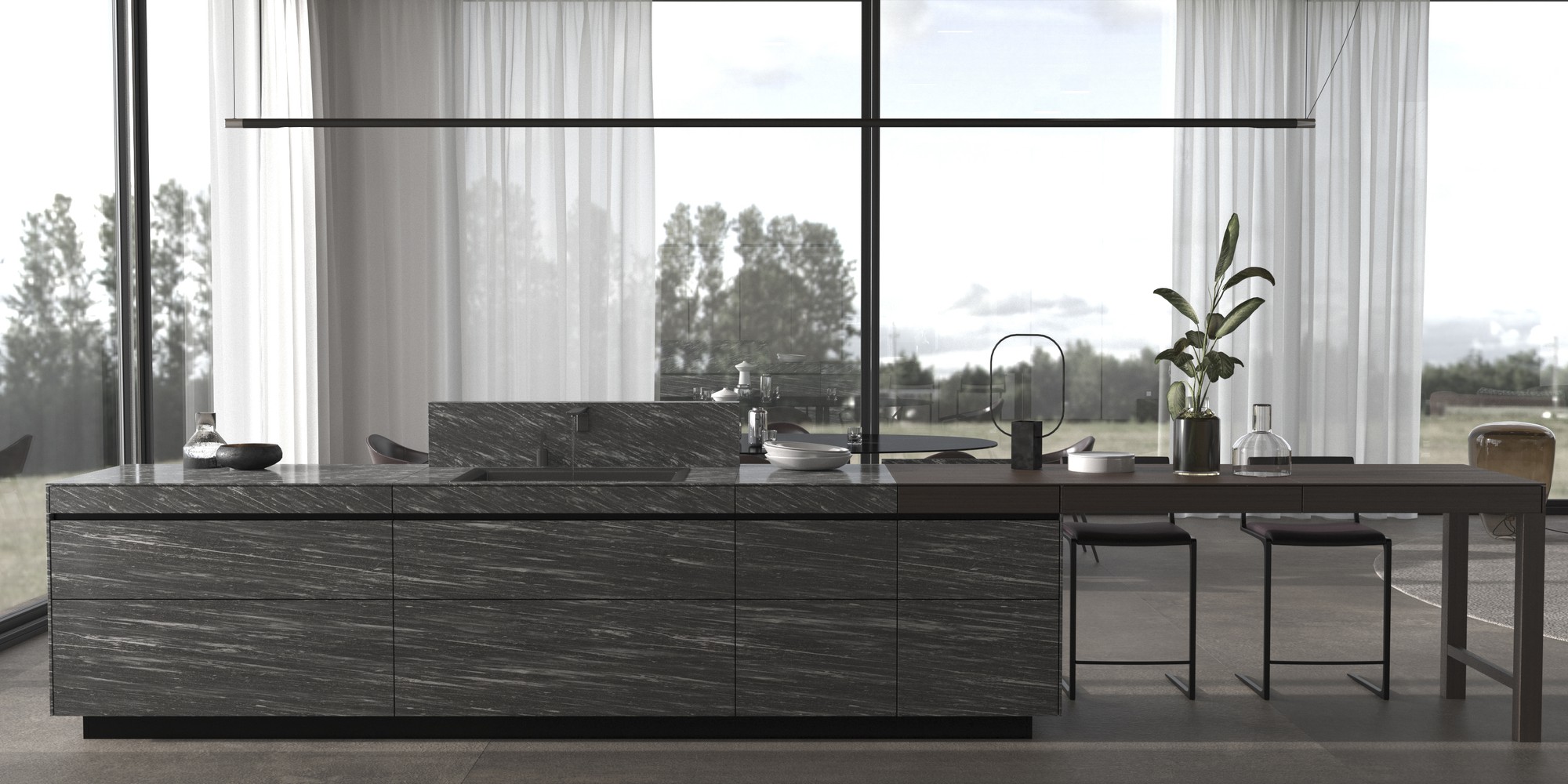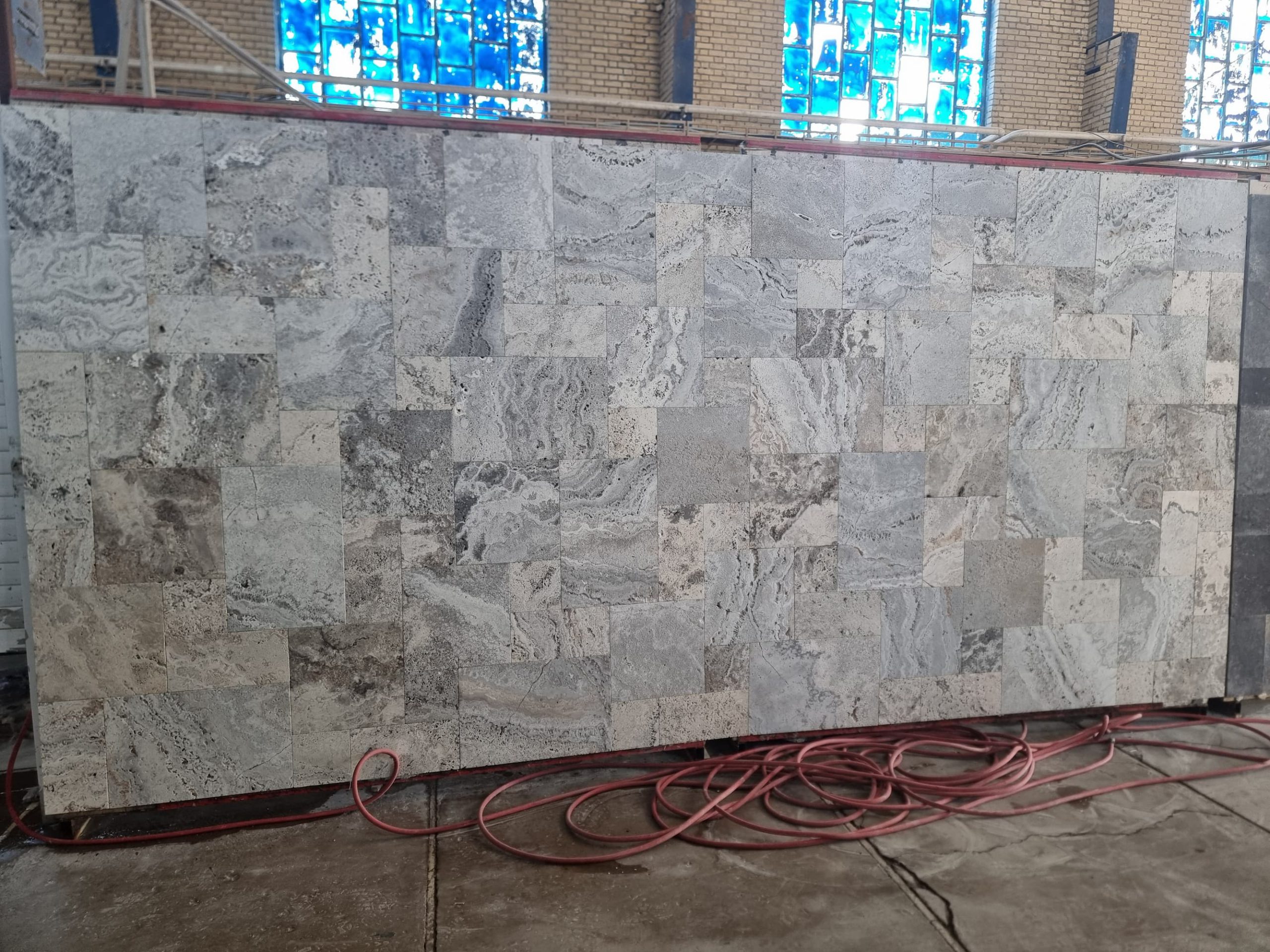Silver travertine stone, used for various areas, is a remarkable natural material renowned for its elegance and durability. This comprehensive guide explores silver travertine’s multiple applications and benefits, shedding light on why it’s a popular choice in construction and design projects.
Properties of Silver Travertine
-
Color and Texture
Silver travertine exhibits a captivating blend of silver, gray, and beige hues, with intricate veining and natural variations in texture. Its honed or polished finish adds elegance to any space, making it a sought-after option for interior and exterior design projects.
-
Durability
Despite its sophisticated appearance, silver travertine is highly durable and can withstand heavy foot traffic, making it suitable for residential and commercial settings. Its resilience to wear and tear makes it an excellent choice for high-traffic areas.
-
Versatility
One of the critical attributes of silver travertine is its versatility. It complements a wide range of architectural styles, from contemporary to traditional, and can be used in various applications, including Flooring, wall cladding, and paving.

Common Uses of Silver Travertine Stone
-
Interior Flooring
Silver travertine is a timeless choice for Flooring in residential and commercial spaces, and it is celebrated for its inherent beauty and remarkable durability. Whether adorning the floors of living rooms, kitchens, or bathrooms, this natural stone effortlessly infuses spaces with sophistication and elegance.
-
Exterior Paving
Silver travertine emerges as the material of choice when it comes to outdoor spaces like patios, walkways, and driveways, seamlessly blending indoor and outdoor environments. Its innate beauty elevates the aesthetic appeal of landscapes and provides a reliable and slip-resistant surface, ensuring safety and style coexist harmoniously.
-
Wall Cladding
The versatility of silver travertine extends to wall cladding, both indoors and outdoors, where it lends texture and visual interest to architectural facades. Whether gracing the walls of a cozy living room or serving as the striking facade of a commercial building, silver travertine imparts a sense of character and charm to any space it adorns.

Silver Travertine Stone in Construction Projects
-
Residential Applications
Silver travertine is versatile in residential construction projects, from flooring and kitchen backsplashes to bathroom walls and outdoor patios. Its adaptability and resilience make it a sought-after option for homeowners aiming to imbue their spaces with luxurious yet practical materials.
-
Commercial Applications
Silver travertine earns accolades for its aesthetic allure and robust nature in commercial settings such as hotels, restaurants, and office buildings. It graces lobbies, corridors, and outdoor plazas, enhancing the ambiance with its timeless elegance while standing strong against the rigors of high-traffic areas.
Landscaping with Silver Travertine
-
Patios and Pool Decks
Silver travertine emerges as the epitome of excellence for outdoor entertaining areas like patios and pool decks, boasting a slip-resistant surface and heat-reflective properties. Its natural beauty complements surrounding landscaping elements such as lush greenery and shimmering water features and provides a functional and inviting space for relaxation and recreation.
-
Garden Pathways
In garden design, silver travertine proves to be a transformative element, lending itself to creating meandering pathways that seamlessly blend with the natural environment. Its smooth texture and cool tones evoke a sense of tranquility, beckoning visitors to wander and explore the enchanting garden space one step at a time.

Maintenance and Care Tips for Uses of Silver Travertine
To keep your silver travertine surfaces looking their best, follow these simple maintenance tips:
- Regular Cleaning: Sweep or vacuum regularly to remove dirt and debris, and mop with a pH-neutral cleaner to prevent etching.
- Prevent Etching: Clean up spills promptly and use coasters or mats under glasses to protect against acidic substances.
- Annual Sealing: Apply a penetrating sealer annually to protect against stains and moisture.
- Professional Maintenance: Consider hiring an experienced stone care specialist for expert advice and periodic maintenance.
Environmental Impact of Using Silver Travertine
When considering the environmental impact of using silver travertine, it’s essential to recognize both its advantages and challenges:
Advantages:
- Sustainability: Silver travertine is a natural stone sourced from quarries, making it a renewable resource when harvested responsibly.
- Durability: Silver travertine requires minimal replacement due to its durability and longevity, reducing the demand for new materials and minimizing waste.
- Low Carbon Footprint: Compared to synthetic materials, the production process of silver travertine generates fewer greenhouse gas emissions, contributing to lower overall environmental impact.
Challenges:
- Resource Extraction: Quarrying activities associated with silver travertine extraction can disrupt natural habitats and landscapes, leading to biodiversity loss and habitat destruction.
- Energy Consumption: The extraction, processing, and transportation of silver travertine require significant energy inputs, contributing to carbon emissions and environmental pollution.
- Waste Generation: While durable, silver travertine can produce waste during manufacturing and may result in offcuts or unused materials that contribute to landfill waste.
Overall, while silver travertine offers many benefits in terms of sustainability and durability, it’s essential to consider its environmental impact holistically and explore ways to mitigate any adverse effects through responsible sourcing, efficient production methods, and waste management practices.

Pros and Cons of Using Silver Travertine
-
Pros:
- Timeless beauty
Durability
- Versatility
- Natural variation
- Slip-resistant surface
-
Cons:
- Requires sealing
- Susceptible to scratching
- Limited color options
I suggest you read: How do you cut silver travertine stone?
Conclusion
Silver travertine stone offers a perfect blend of elegance and durability, making it a popular choice for various architectural and design applications. Whether indoors or outdoors, its timeless beauty and versatility enhance the aesthetic.

 Marble
Marble